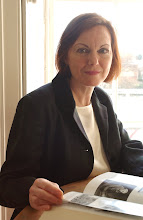 Until the end of the 18th century, Bloomsbury was a rural spot on London’s northern fringe, part of a large estate owned by the Dukes of Bedford which was centred on Southampton (later Bedford) House. Great Russell Street was “inhabited by nobility and gentry..(with)..the prospect of pleasant fields up to Hampstead and Highgate”. Montagu House was built in 1675 as a country retreat for the Montagu family but was rarely used, and so was sold in 1754 to house the collections of the new British Museum. There were still fields to the north, but London was growing rapidly, and by 1795 Francis, 5th Duke of Bedford, began planning further building development.
Until the end of the 18th century, Bloomsbury was a rural spot on London’s northern fringe, part of a large estate owned by the Dukes of Bedford which was centred on Southampton (later Bedford) House. Great Russell Street was “inhabited by nobility and gentry..(with)..the prospect of pleasant fields up to Hampstead and Highgate”. Montagu House was built in 1675 as a country retreat for the Montagu family but was rarely used, and so was sold in 1754 to house the collections of the new British Museum. There were still fields to the north, but London was growing rapidly, and by 1795 Francis, 5th Duke of Bedford, began planning further building development.From 1800 onwards, the new estate was laid out. Bedford House was demolished, and a grand square – Russell Square – laid out in its former grounds. Humphry Repton, the great landscape gardener, was paid the amazing sum of £2,750 to design Russell and Bloomsbury Squares. New streets were laid out, including the future Montague Street/Russell Square, at first know as Bedford Terrace. The builder James Burton was employed to surround Russell Square with elegant houses, which he did between 1804-06. The prospect was described in 1805; “Squares, and spacious streets of the first respectability are rising in every direction; and the north side of the parish will, in a few years, contain an immense accumulation of riches, attracted by the grand structures in Russell Square now almost complete....” The photograph above, taken by Carole Reeves on 3 January 2011, shows Russell Square with its central fountain and the Post Office Tower in the background.
The earliest residents of 42-43 Russell Square were of course gentlemen. As it was close to Grays Inn and Lincolns Inn, the area was attractive to lawyers, and so many of them lived in Russell Square that it was nicknamed “Judge-Land”.
In the 1820s, No. 42 was occupied by one Captain William Agnew, a member of the “London Institution for the Advancement of Literature and the Diffusion of Useful Knowledge”, while next door resided James Christian Clement Bell and his family. Bell, a wealthy merchant, was born in Dunkirk in 1788. He married Jane Strangman at St. Pancras, his local church, in 1825, and the 1851 census shows they had at least two children, James junior and Alicia, and all looked after by a butler, cook, lady’s maid, housemaid and footman. Mr. Bell was active in mercantile affairs, corresponding with the Earl of Aberdeen about getting rid of the slave trade. He had also been appointed Tuscan Consul General, which implies he traded with Italy. Tuscany was an independent grand duchy until 1859, so 43 Russell Square has the distinction of having served as a foreign embassy!
